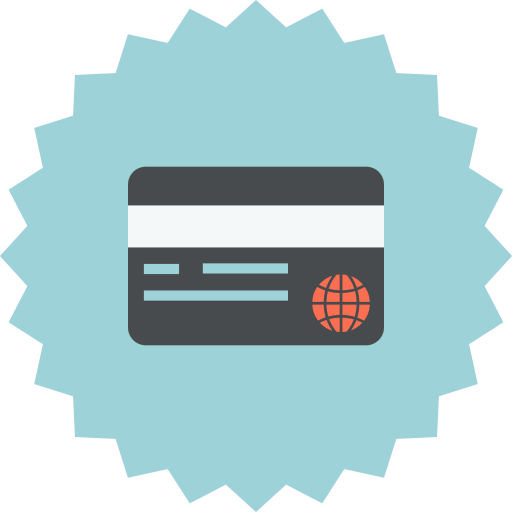Generate free credit cards using Namso Gen, with the help of Luhn algorithm for CCGen. GoNamsoGen is a Random CC Generator for Visa, MasterCard, Amex, and more.
In the quickly changing digital world, where online transactions are becoming more common, the tools and technologies that simplify these operations are gaining popularity. One such tool is Namso GEN, a credit card number generator that has aroused curiosity and debate.
Below the article has detailed discussion providing the comprehensive guidance about the features, usage, purpose and ethical consideration of this tool. Moreover, this article will help you in making the decision of using Namso CCGEN.
Recent Namso Gen Updates [31st October 2024]:
- Added advanced card generation to our card generator tool.
- You can generate using different format of BINs such as
Just the BIN (e.g.,553535)
BIN withx(e.g.,5535xxxxxxxxxx)
Mixed cases (e.g.,555x35xxxxxxxxxx)
What is Namso GEN?
Namso Gen is a credit card number generator using the Luhn algorithm. The created credit card number looks valid and real. The Luhn method, commonly known as the “modulus 10” or “mod 10” algorithm, is a basic checksum formula used to authenticate a wide range of identification numbers, including credit card numbers. Furthermore, the credit card numbers generated through it are the copy of official institutions like Visa, MasterCard, American Express, and others.
Important Note: It is important to understand that Namso Credit Card Generator does not generate credit card numbers that have real money and doesn’t belong to any cardholder. These generated results having cardholder’s name, address, money, CVV/CVC, expiration date, and PIN are randomly generated.
How Namso Gen Works?
It is essential to understand the basics of credit card number before understanding the functions of Namso CCGEN.
The Luhn Algorithm
Namso CCGEN works on the Luhn algorithm that was developed by Hans Peter Luhn. The basic purpose of this algorithm is to detect the simple errors in identification numbers. Below are the steps to check the validity of a number:
- The digits of the credit card number are reversed.
- Beginning with the first digit in the turned sequence, every second digit is doubled.
- If any number is greater than 9 after doubling, then subtract 9 from it.
- Add up the digits in the changed sequence.
- If the sum of numbers can be divided by 10 then the number is considered valid.
These are the criterias to generate valid numbers by using the CC GEN.
Generating Credit Card Numbers with Namso CCGEN
Below are the steps to generate credit card numbers by using Namso CCGEN:
Inputting the BIN (Bank Identification Number)
BIN is the first six digits of a credit card number that is for the identification purpose of a banking institution. So, the first step is to input the BIN either a specific or to choose from the provided list.
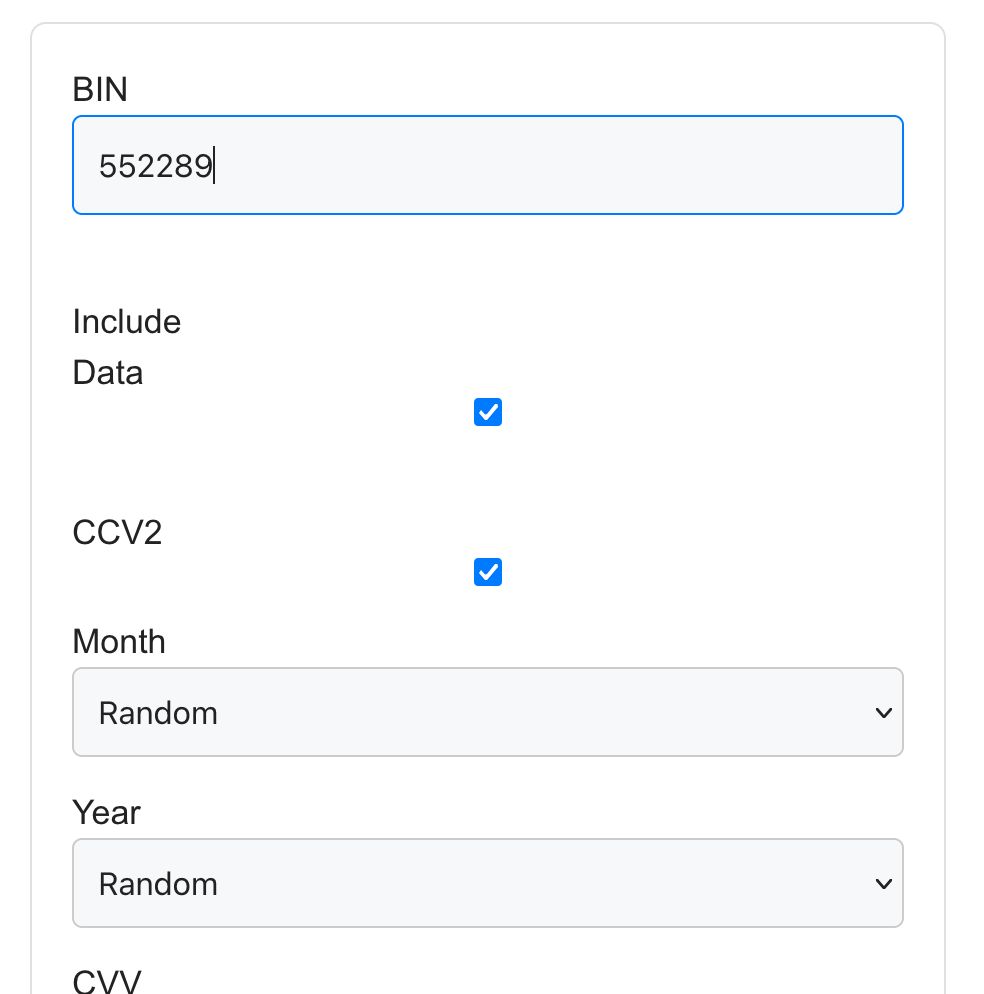
GoNamsoGen.com
Defining Parameters
After the selection of BIN, the next step is defining the parameters like quantity of credit card numbers, expiry date and CVV (Card Verification Value) code.
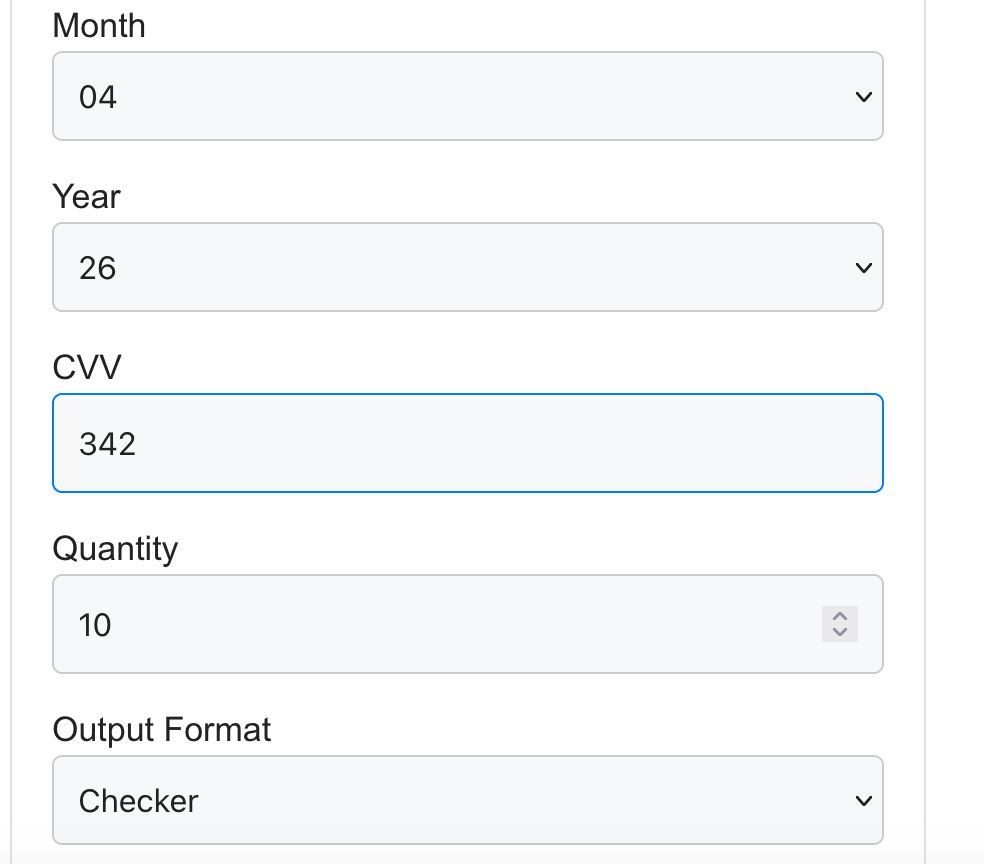
GoNamsoGen.com
Generating the Numbers
Once the parameters are selected, Namso CCGEN generates a list of credit card numbers that follow the Luhn method. These numbers are designed to pass basic validation tests, but they are not associated with any bank accounts.
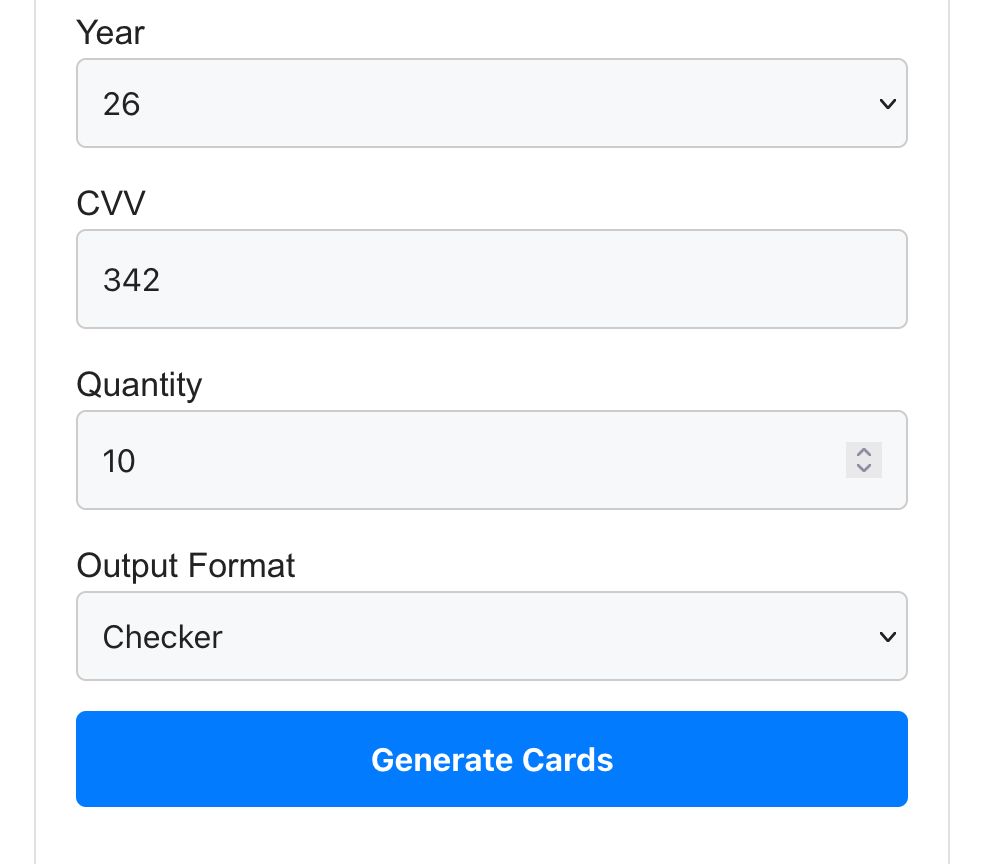
GoNamsoGen.com
Output
The produced credit card numbers, together with other specified characteristics such as expiration dates and CVV codes, are displayed to the user.
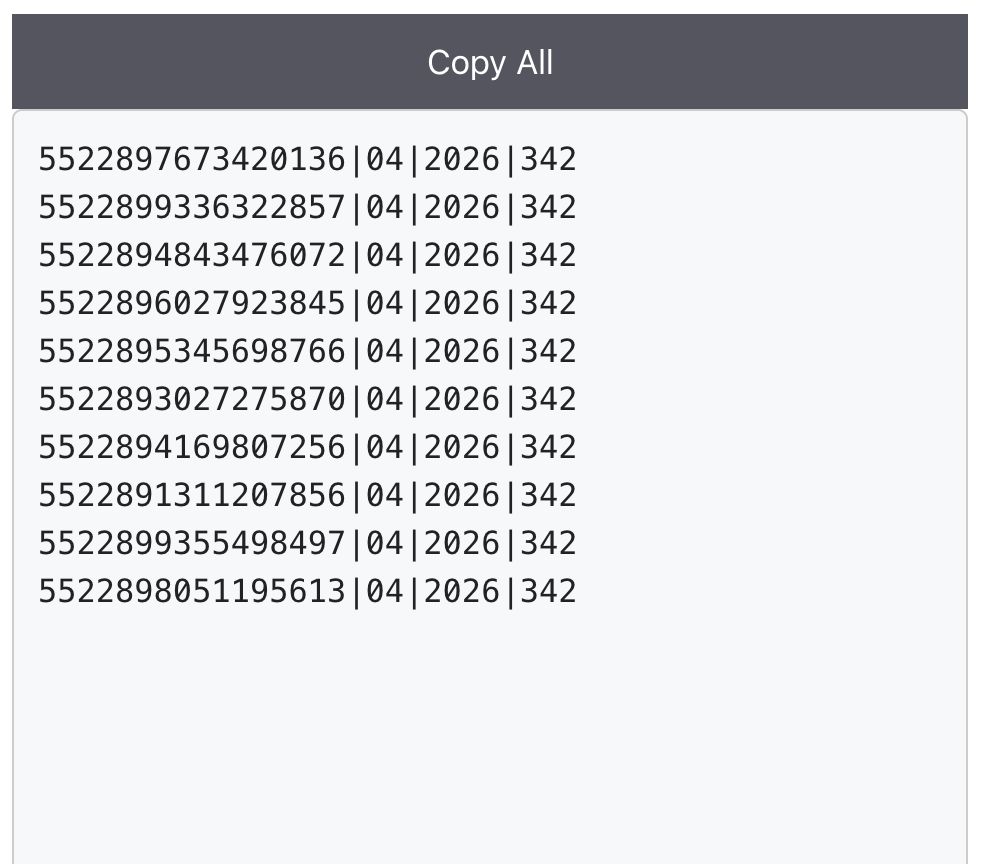
GoNamsoGen.com
Applications of Namso GEN
The CC GEN has a majority of applications but is mainly used in the departments of software development, education, and cybersecurity. Below are the areas mentioned in which this tool can be helpful:
1. Software Development and Testing
The main and basic function of a credit card generator is to fulfill the testing purposes of payment systems. The functionality of payment gateways can be checked through the credit cars in the e-commerce system.
Using genuine credit card numbers for testing presents substantial dangers, including the possibility of fraudulent purchases and data breaches. Namso CCGEN offers a safer option by generating credit card numbers that pass basic validation tests but are not linked to any actual bank accounts.
By using these credit card numbers developers can access the issues that users may face during placing an order on their stores. Moreover, handling declined transactions can also be made possible by using these numbers.
2. Educational Purposes
Namso CCGEN can be useful in the educational purposes for teaching students about the credit card numbers, security risks and the Luhn algorithm. Moreover, those students who have enrolled themselves in courses like computer science, cybersecurity, or financial technology need to know the generation, validation and usage of credit card numbers.
Students can learn about the significance of data validation, the function of algorithms in safeguarding financial transactions, and the risks connected with poor credit card handling. Using Namso CCGEN in an educational setting provides learners with significant insights into the mechanics of digital money as well as the safeguards required to protect sensitive data.
3. Cybersecurity Research
In the field of cybersecurity, Namso GEN are used for research purposes to identify risks and the strategies to overcome them. For example, ethical hackers could utilize Namso CCGEN to assess the security of e-commerce platforms and payment processors. By producing legitimate-looking credit card numbers, they may mimic attacks on payment systems to find vulnerabilities that could be exploited by unethical users.
It is important to conduct this research within the legal boundaries and by not breaking any rules. However, these researches are helpful in improving security as well as reducing the risks of frauds.
Ethical Considerations and Legal Implications
While Namso CCGEN has legitimate applications, its use creates serious ethical and legal issues. It is critical to understand the potential impacts of utilizing this technology, especially in scenarios involving real-world financial transactions.
1. Potential for Misuse
The biggest concern of credit card generators is that there is potential for misuse. These numbers can lead to financial frauds by exploiting the payment system. Although these numbers are not attached to any banks, they still can pass the validation checks which leads to unauthorized transactions and financial fraud.
2. Legal Consequences
The use of Namso CCGEN for fraudulent purposes is unlawful in most countries; engaging in credit card fraud, even with generated numbers, can result in severe legal consequences, including fines, jail, and reputational harm.
Many countries have strict rules in place to prevent credit card theft and protect data. Violations of these laws may result in criminal charges. civil lawsuits, and massive financial fines. So, it is better to use these kinds of tools for just the legal purposes and to avoid any issues.
3. Ethical Responsibility
There are some ethical responsibilities parallel to legal implications of using Namso CCGEN. So, those who are using these tools either for testing or educational purposes must not violate its usage and fulfill only legal purposes.This includes avoiding any use of the technology that could endanger others, such as engaging in fraud, exposing weaknesses, or violating privacy.
Risks Associated with Namso GEN
Although namsopro is a useful tool, it is not without risks. These risks can be harmful and cause misuse of the tool which can lead to various consequences. Below are the potential risks associated with this tool:
1. Fraudulent Activities
The most common risk of this tool is its potential use in fraudulent activities. This can be used by fraudsters to perform different illegal activities like unauthorized purchases, identity theft, and money laundering.
2. Data Security Risks
Using Namso CCGEN for testing also offers data security problems. If generated credit card numbers are not managed securely, hostile actors may intercept and utilize them for fraudulent reasons. Developers and cybersecurity professionals must adopt strong security measures while utilizing Namso CCGEN to prevent generated data from unwanted access.
3. Legal and Reputational Risks
In addition to legal issues, reputational risks should be considered. Individuals and organizations proven to be involved in or assisting fraud could result in considerable reputational damage, resulting in a loss of confidence, consumers, and business possibilities.
Best Practices for Using Namso Gen
It is better to understand the best use of this ccgen tool to minimize the security risks. Follow the below guidelines to use this tool in ethical manner:
1. Restrict Use to Legitimate Purposes
NamsoGen should only be used for legal, ethical, and constructive objectives. This includes testing payment systems, giving educational demonstrations, and conducting authorized cybersecurity research. Avoid using the tool in any way that would endanger people or break the law.
2. Implement Security Measures
Ensure to handle the data carefully while generating credit card numbers through Namso CCGEN. This involves implementing encryption, secure storage, and access controls to keep created data safe from unauthorized access. Moreover, it is better to not share the generated card number with anyone.
3. Stay Informed About Legal Requirements
Ensure that your use of the tool conforms with all applicable rules and regulations, and obtain legal advice if you are unsure about the legality of a particular use case. It is better to stay informed to avoid any issues.
4. Educate and Train Users
It is better to train users before providing them access to this tool in an educational or professional setting. So, all the users will be aware of all the ethical and legal implications of using the tool. Furthermore, it is important to emphasize upon the consequences of the misuses of Namso CCGEN.
Conclusion
To conclude, Namso CCGEN is an amazing tool that can be helpful in software development, education, and cybersecurity research. Moreover, this tool is not free from risk and its illegal use can raise significant ethical and legal concerns. So, the tool must be used by keeping all the legal implications under consideration to avoid serious issues involving jail, fine and reputational loss.
Users of CCGen can contribute positively to the digital landscape while minimizing the risks associated with this powerful tool by adhering to best practices and staying informed about legal and ethical concerns.
FAQs – Frequently Asked Questions
1. What is Namso CCGEN and how does Namso Gen work?
It is the credit card number generator which follows the Luhn algorithm to create valid-looking credit card numbers for testing and educational purposes. These card numbers often pass the basic validation checks but are not linked to actual accounts.
2. Is it legal to use Namso GEN?
It is legal to use this tool for educational, research and testing purposes. Moreover, it is prohibited to use for fraudulent activities, such as making unauthorized purchases which can lead to serious legal consequences.
3. What are the risks associated with using Namso CCGEN?
If the generated card numbers are used for fraudulent activities then it could lead to jail, heavy fines and this will lead to reputational loss.
4. Can CCGEN be used for real transactions?
No, it is not useful for real transactions and linked to any bank account or a cardholder. These are only generated for fulfilling research purposes and to do testing for e-commerce stores.
5. How do I use Namso Gen?
To use it responsibly, it is recommended to stay in the legal boundaries. Moreover, it is better to stay aware of all the laws about this method. So, you may not break any rule and pay the price for it.
6. How can I add the names of VCC in the Namso-GEN website?
To add names of Virtual Credit Cards (VCC) in Namso CCGEN, you have to update the names manually in the boxes along with the BIN (Bank Identification Number) and expiration dates. It is important to note that these details are not real and do not belong to any real account.
